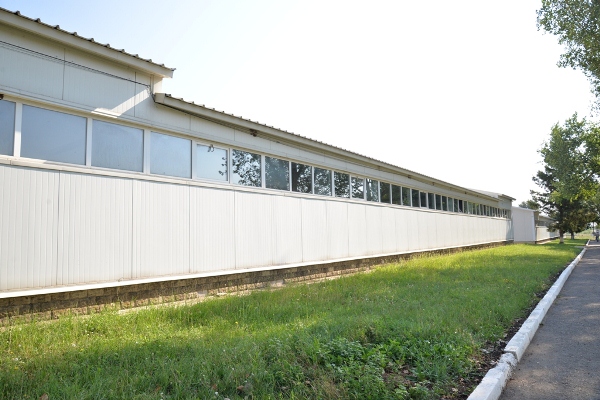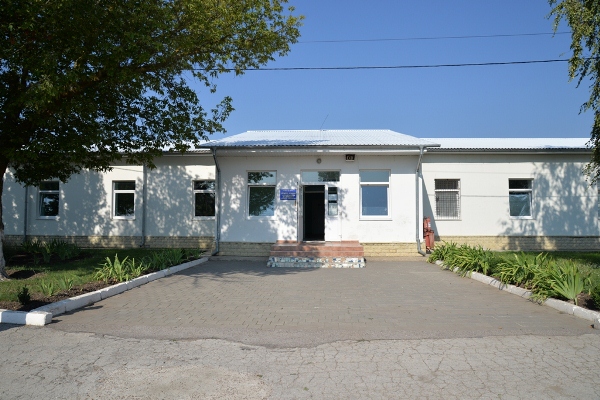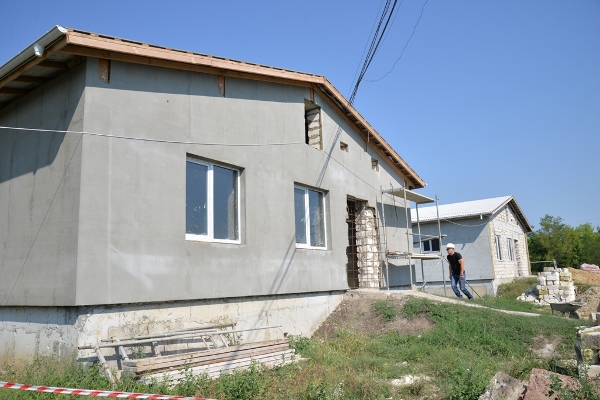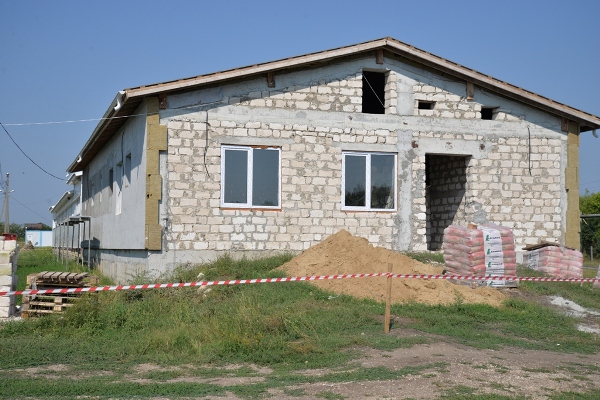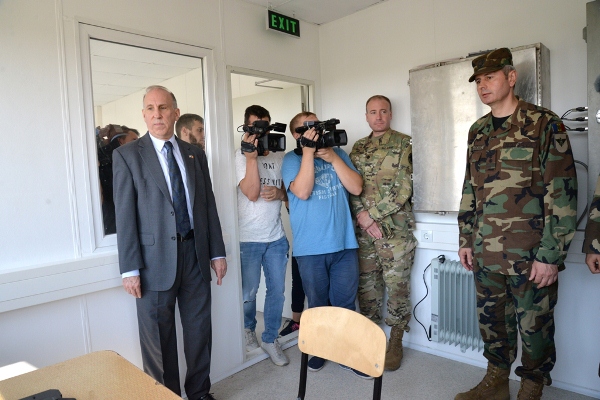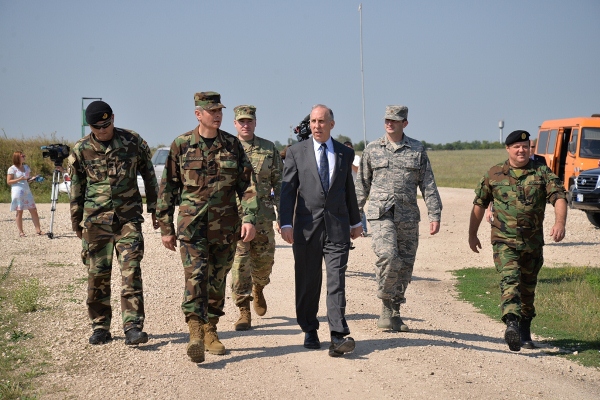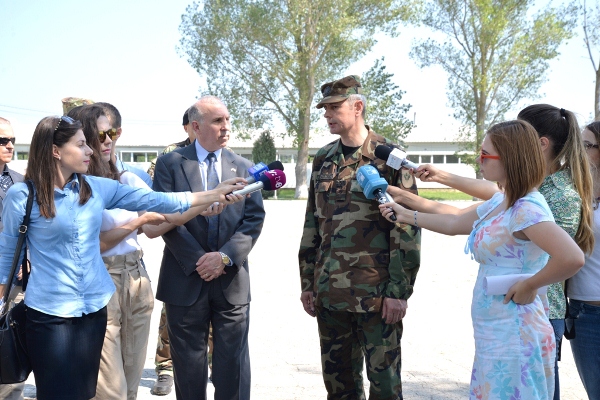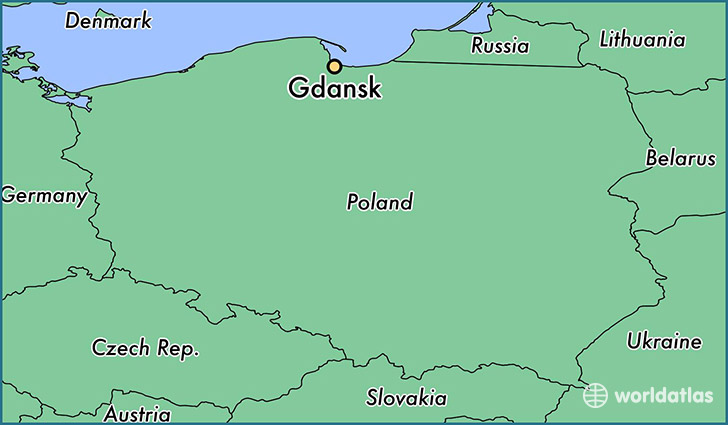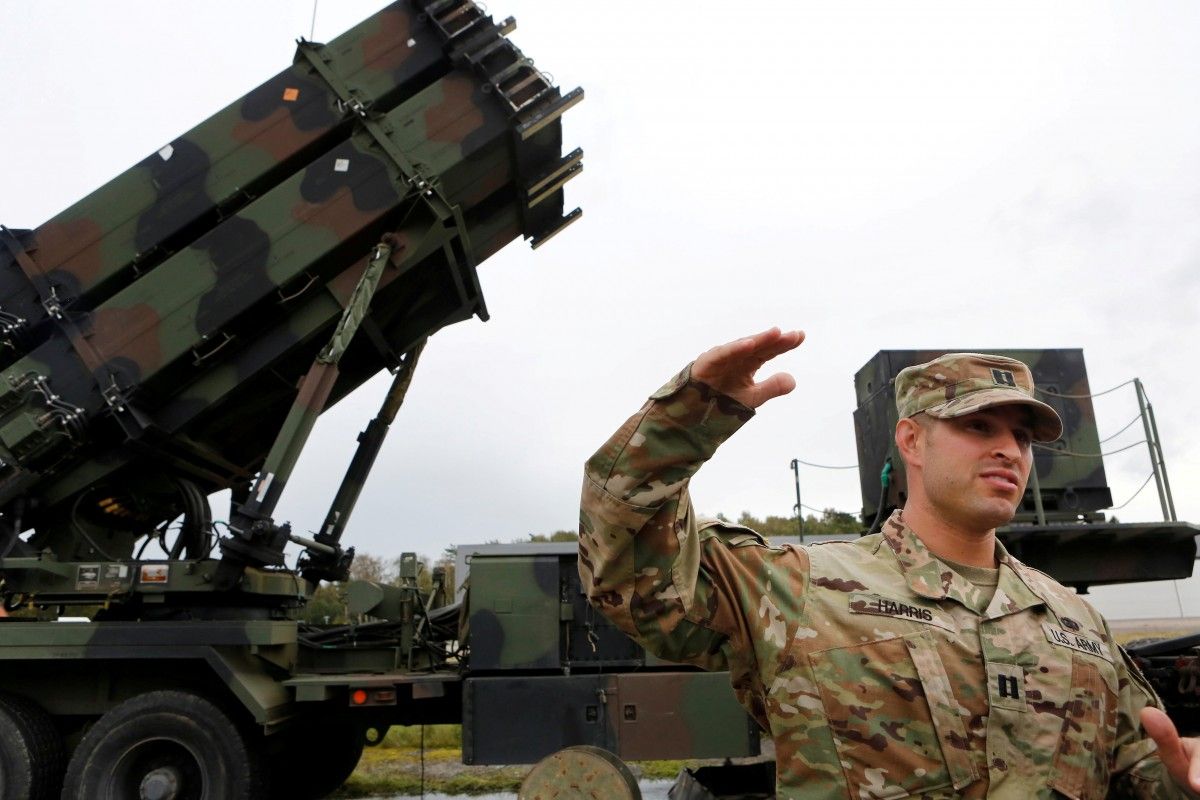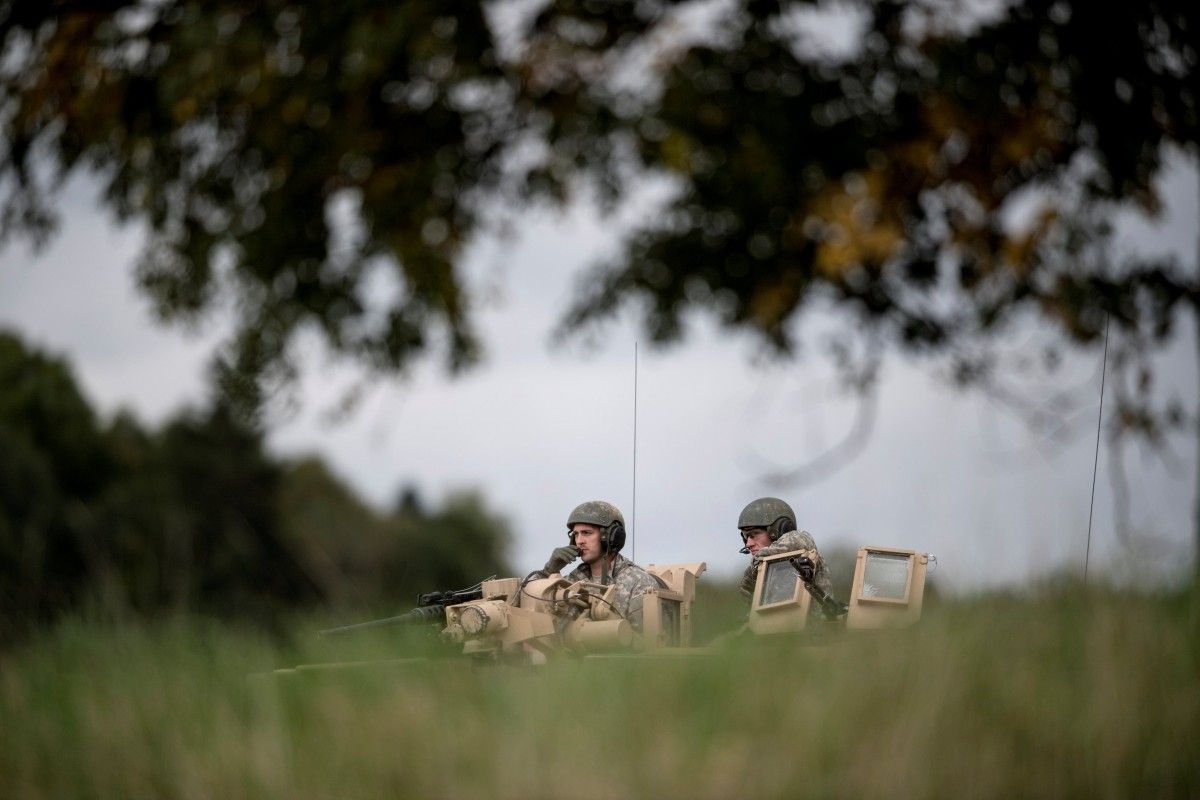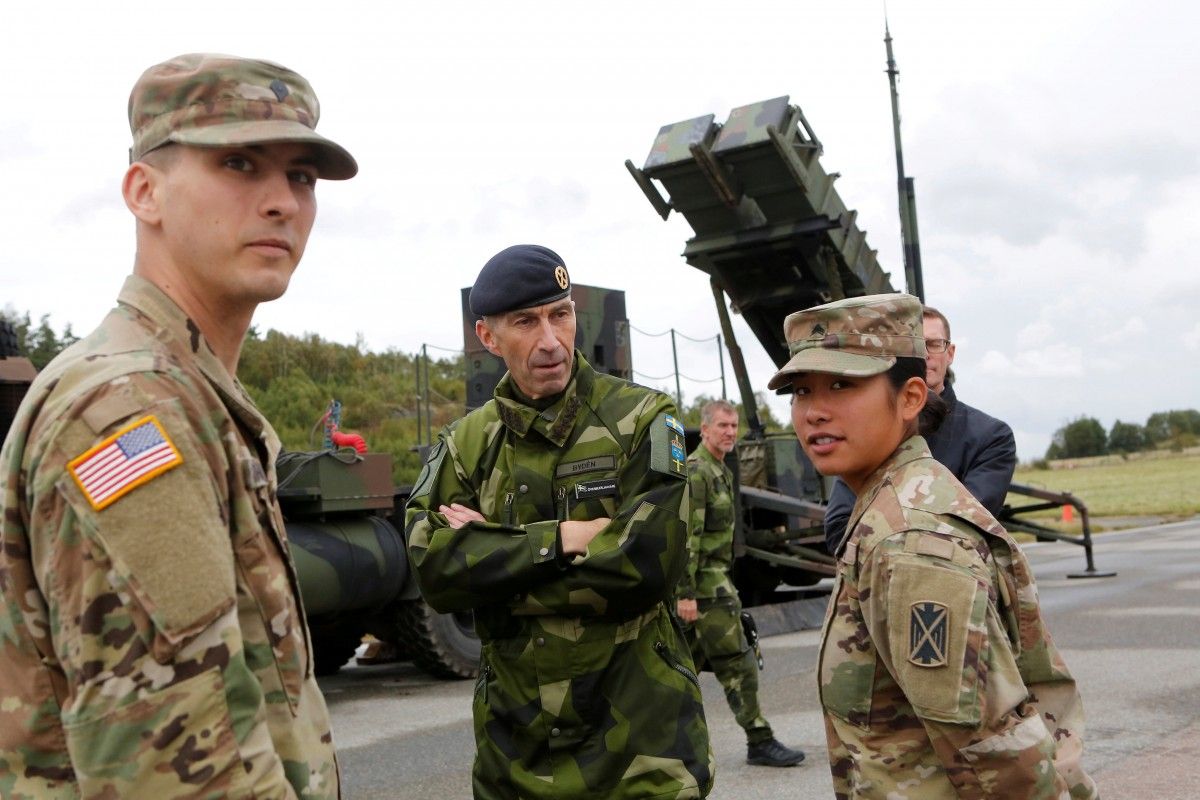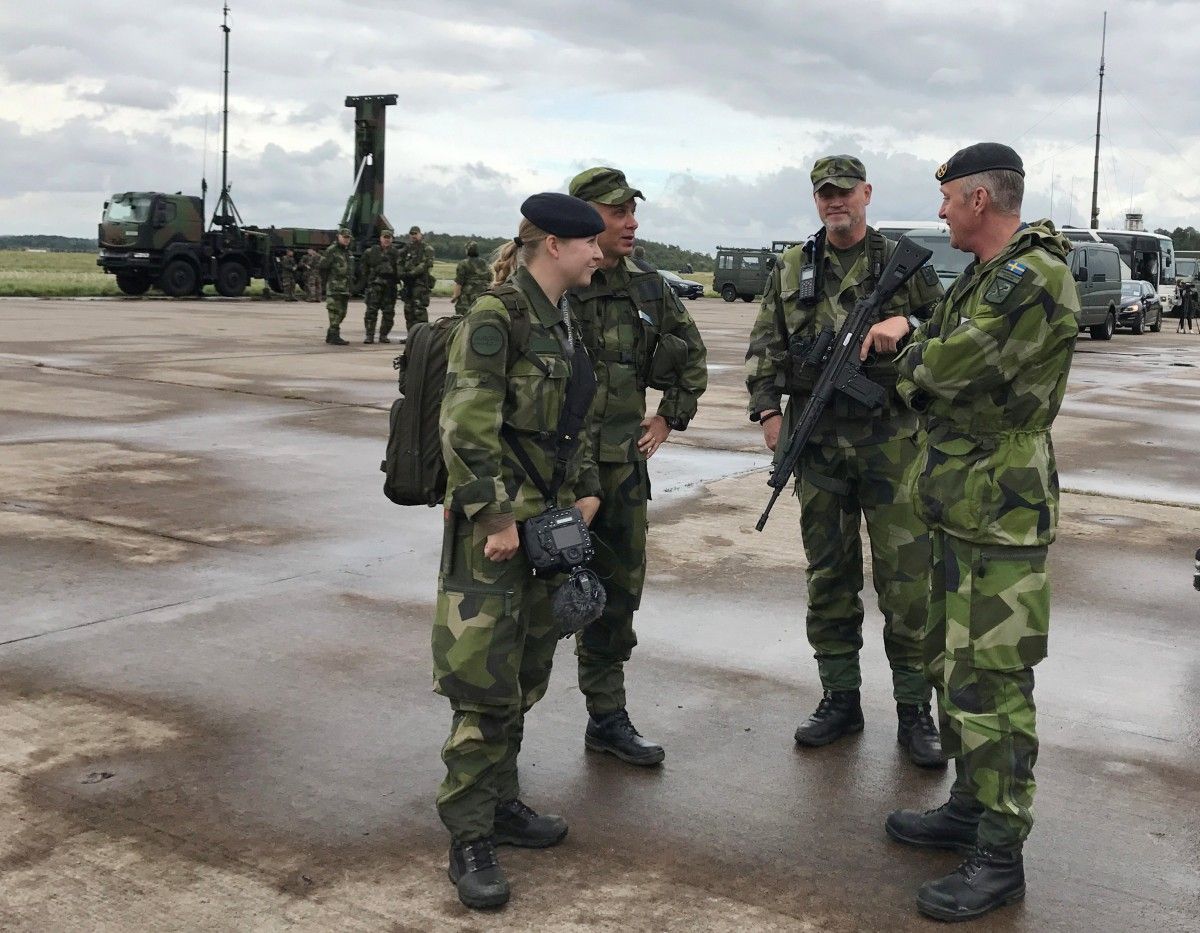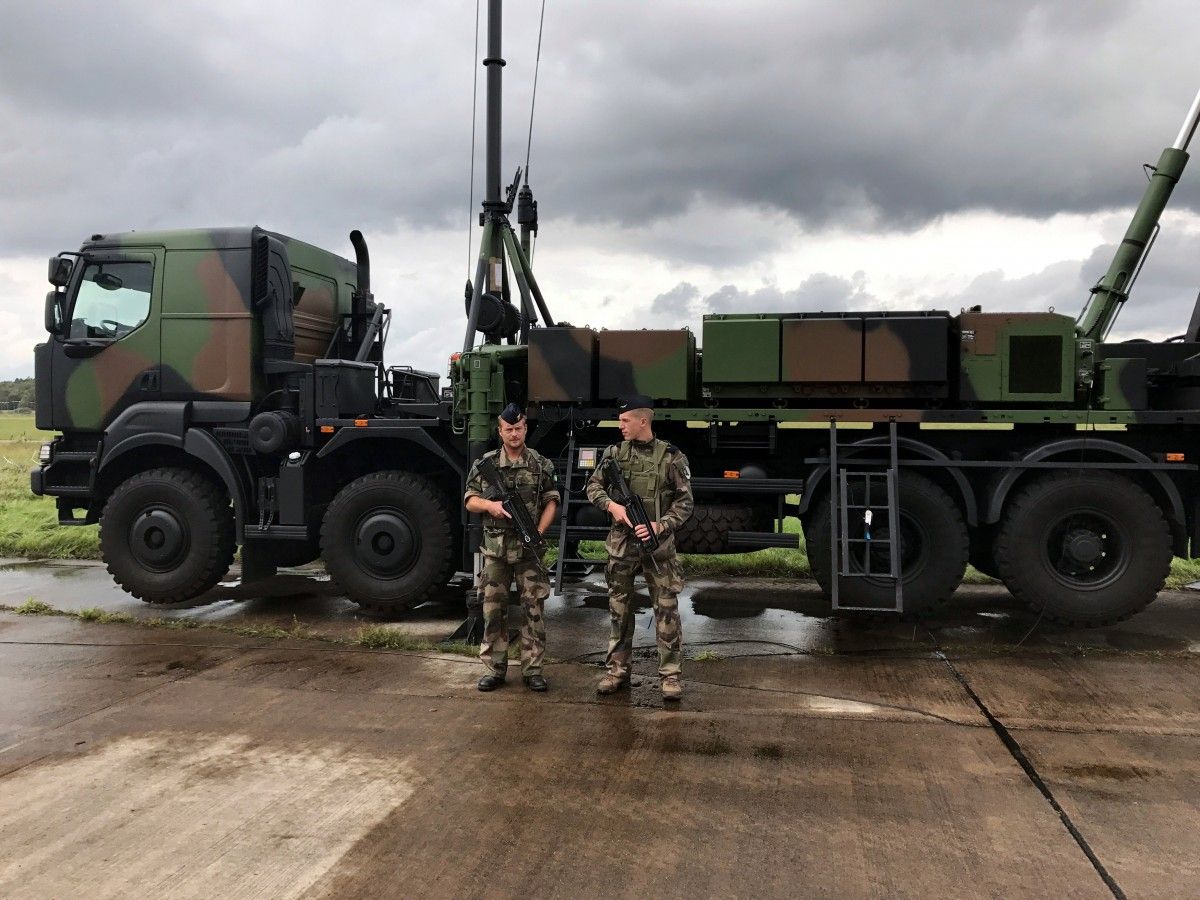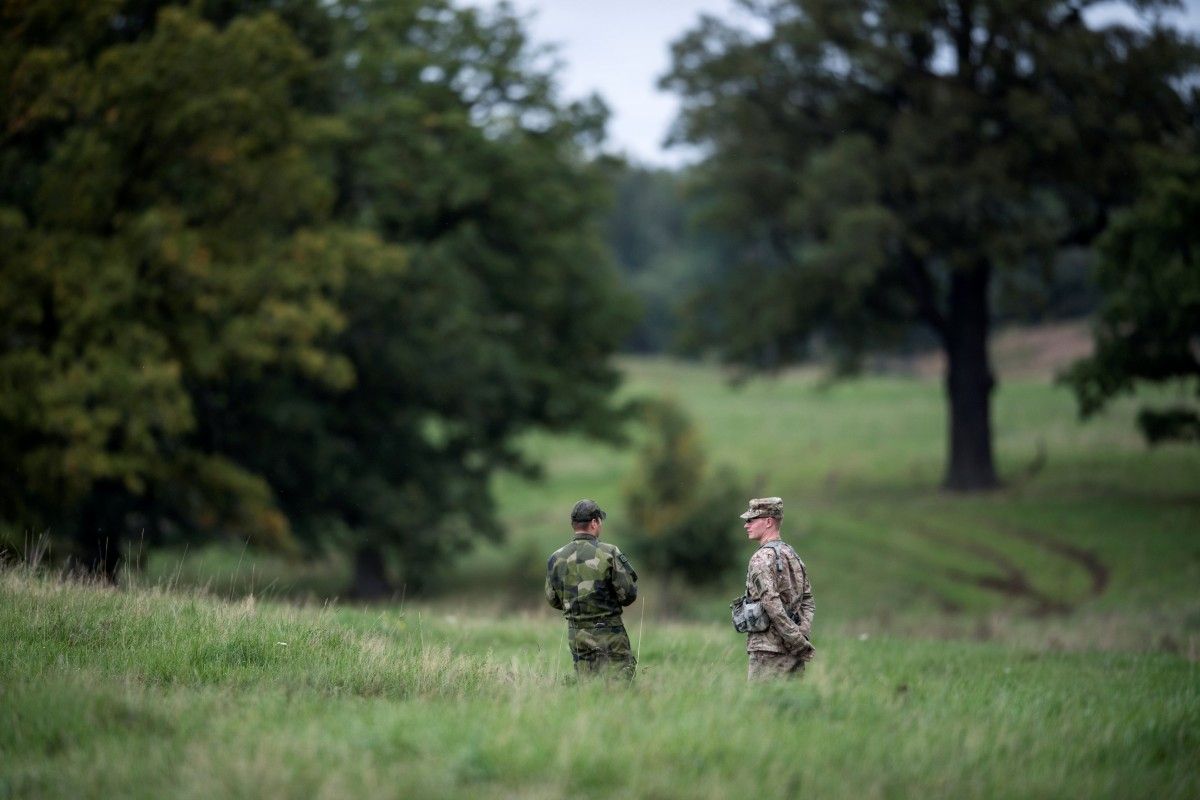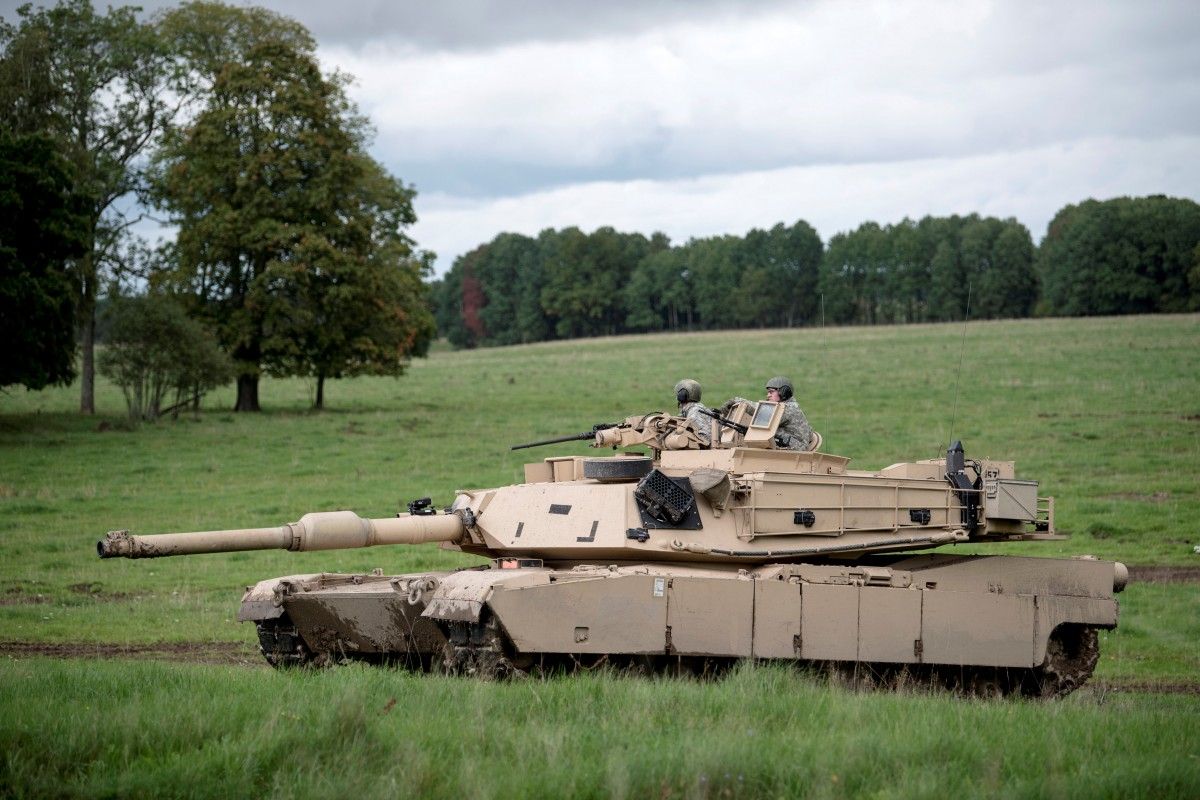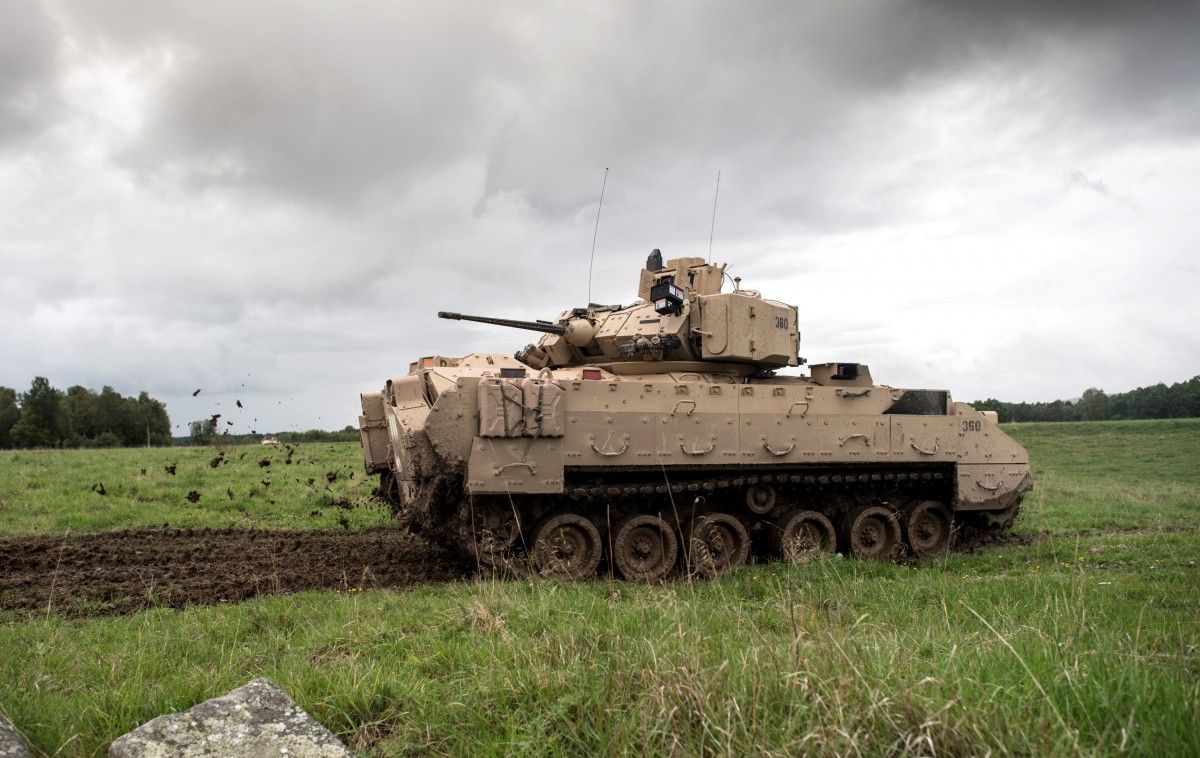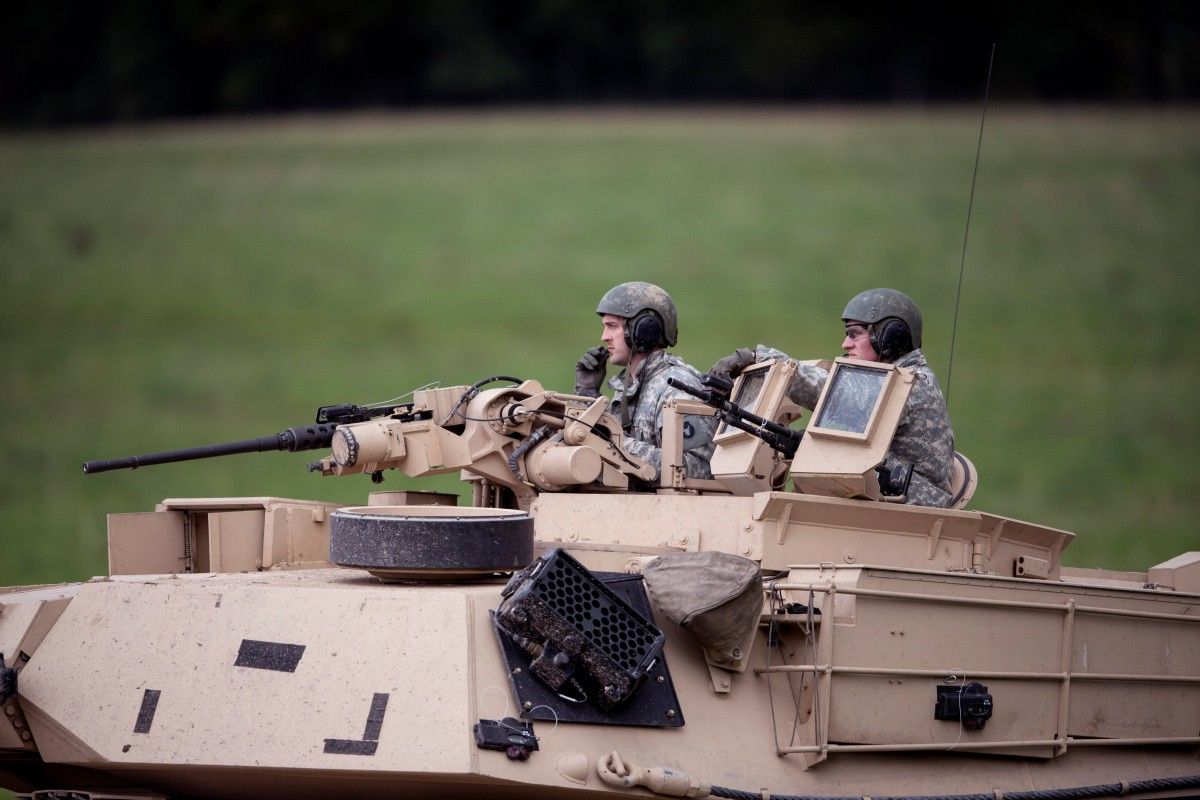https://sputniknews.com/military/20...itary-gdansk-eastern-europe-atlantic-resolve/
The US military equipment arrived in Gdansk for further deployment in E. Europe as part of Operation Atlantic Resolve.
US troops and equipment arrived in Gdansk, Poland on Wednesday as a part of the first full rotation to maintain a US armored brigade in Europe, 21st Theater Sustainment Command commanding general Steven Shapiro said.
"A lot of coordination went into today’s event," Shapiro said in a press conference on Wednesday. "We chose Gdansk, because of the location inside of Poland, but also, because we’d like to use a variety of ports."
The vehicles that arrived in Poland include 87 M1 Abrams tanks, 103 Bradley Fighting Vehicles, 18 Paladin self-propelled Howitzers, along with other trucks and equipment, according to the Defense Department.
Second Armored Brigade Combat Team, 1st Infantry Division, from Fort Riley, Kansas will replace 3rd Armored Brigade Combat Team, 4th Infantry Division.
Operation Atlantic Resolve was launched to boost NATO's military presence in Lithuania, Latvia, Estonia and Poland following the eruption of the Ukrainian crisis in 2014 with the Western countries using alleged Russian interference in Ukrainian affairs as a pretext.
***************
Gothenburg Sweden
https://sputniknews.com/military/201709131057358367-sweden-exercise-protests/
Sweden's biggest military exercise in over two decades kicked off in Gothenburg earlier this week. The Aurora 17 drills feature over 20,000 military personnel from Finland as well as the US, France and other NATO countries, which joined formally non-aligned Sweden to the consternation of peace activists, politicians and ordinary Swedes.
The drills mark the first time the controversial Host Nation Support Agreement has been implemented in the Nordic country. In practice, though, NATO troops can arrive in Sweden at Stockholm's invitation.
This show of force, covering the Stockholm area, Gothenburg, central Sweden and the Baltic island of Gotland comes during a period of sharp focus on its security, which is claimed to be endangered by Russia's "increased activity in the Baltic region." Perhaps unsurprisingly, the scenario of Aurora 17 involves an attack of a fictitious country simulated by the US, yet which bears clear resemblance to Russia.
Aurora 17 cost Sweden's state coffers 580 million SEK ($73 million), which is twice as much as the Armed Forces usually spend on military exercises in an entire year. Money, however, does not seem to be an issue for the Swedish army anymore, as Swedish "red-green" coalition government recently agreed a new defense deal with the opposition parties. Between 2018 and 2020, 6.8 billion SEK ($841 million) will go to the Swedish military, whereas another 1.3 billion SEK ($160 million) to civil defense, totaling $1 billion over just three years.
Swedish Defense Minister Peter Hultqvist called Aurora the country's biggest operation in 23 years, where the army, the air force and the navy collaborate in a single drill. In a
statement, he also argued that the exercise was an important defense policy signal.
Earlier this year, US Lieutenant General Ben Hodges, who is the commander of the US Army in Europe, singled out the particular importance of Gotland. Last week, this take was shared by NATO Secretary General Jens Stoltenberg, who called Gotland "the focal point of the Baltic Sea" and argued that Sweden's and NATO's security were closely linked, which makes it worthwhile for them to perform joint drills.
Nevertheless, Sweden's largest exercise since the end of the Cold War, has divided Swedish society and has been met with severe criticism.
Left party defense policy spokesman Stig Henriksson argued that the timing of Aurora 17, which coincides with the Russian-Belarusian Zapad 17 exercise, contributed to spiraling tensions in Sweden's immediate surroundings, the Swedish daily
Expressen reported.
"It's our tax money. It could have been used for refugees, the poor and the planet's survival. There are no military solutions to conflicts," Inger Gustavsson of International Women's Association for Peace and Freedom (
IKFF) told the newspaper
Göteborgs-Posten, alluding to the gigantic bill of the exercise.
Tomas Magnusson, the chairman of the
Swedish Peace and Arbitration Association, which condemned Aurora 17, argued that they were not against Swedish military drills as such, yet concluded that such exercises undermine Sweden's time-tested policy of non-alignment.
"Sweden has had freedom of alliance for 200 years, and this has benefited us in many ways," Tomas Magnusson stressing the adverse environmental impact of the exercise.
Karin Utas Carlsson, the spokesperson for the campaign
Stop Aurora, also expressed her concern that Swedish media and politicians have long been trying to tilt Sweden's neutrality to NATO's and the US's side. Even if the Armed Forces denied that the exercise is about holding Russia in check, Carlsson argued that it was obvious.
"A look at the maps of the exercise is enough. We have all gone to school, right? Of course, it's a provocation," Karin Utas Carlsson told the Swedish news outlet
Världen Idag, calling on Stockholm to refrain from portraying Russia as a villain and instead work for dialogue and cooperation.
Carlsson agreed that Russia was "no angel state," yet nevertheless was highly critical of the media's using different benchmarks for different countries.
"We are being told about Russia's aggression on a daily basis, but somehow we never get to hear about US aggression, how they acted in such countries like Yemen, Syria, Libya, Afghanistan and Iraq," Karin Utas Carlsson said.
***************
https://sputniknews.com/military/201709141057372912-us-military-armor-poland-deterrent/
A host of US Army tanks and other pieces of materiel landed in Gdansk, Poland on Wednesday, where they will begin training in live-fire exercises to shore up NATO’s presence along the alliance’s easternmost border.
87 M1 Abrams tanks, 103 Bradley Infantry Fighting Vehicles, 18 M109A6 Paladin self-propelled howitzer artillery, as well as trucks and other equipment have arrived in Poland, according to US military sources.
The troops in question are with the 2nd Armored Brigade Combat Team, 1st Infantry Division. Normally stationed in Fort Riley, Kansas, the so-called "Dagger Brigade" was deployed to replace troops with the 3rd Armored Brigade Combat Team, 4th Infantry Division out of Fort Carson, Colorado, who are nearing the end of their deployment in Poland.
"This will be the first time two armored brigades transition within the European theater sending a full complement of soldiers and equipment into Germany and Poland in support of Operation Atlantic Resolve," said Master Sgt. Brent Williams, a spokesman for NATO command in Eastern Europe.
The 3rd Brigade's nine-month deployment saw them participate in numerous live-fire drills with other NATO partners, making it one of the US' most combat-ready units according to brigade commander Col. Michael J. Simmering. "The Soldiers of 3rd Brigade have spent their time in theater training at every opportunity," said Simmering. "After numerous live-fire exercises and multiple other training events, our team is arguably the most lethal armored brigade in the Army."
Now it's the 2nd Brigade's chance to receive this same level of training and readiness. Over the next few weeks, the 3rd Brigade will phase themselves out of exercises before eventually returning to the US.
The 2nd Armored, as well as an aviation brigade, have been deployed as part of Operation Atlantic Resolve, a NATO initiative to boost US tank and manpower strength in Europe. All told, NATO's presence along the alliance's eastern flank is as large as it's been since the end of the Cold War.
"By deploying to Europe and distributing our forces across region, we provide a tangible and visible presence of the deterrent capabilities available to respond to crises at decisive points," said Col. David Gardner, the commander of the 2nd Armored Brigade Combat Team.
Four NATO battalions are deployed along the alliance's eastern flank, which consists of Poland, Lithuania, Latvia and Estonia. The latter two nations both share a border with Russia, and all but Estonia border Russia's close ally Belarus — which will host large-scale Russian military exercises later in September.
The increased deployment comes during a time period where tensions between NATO and the Moscow bloc are reaching decade-highs.




